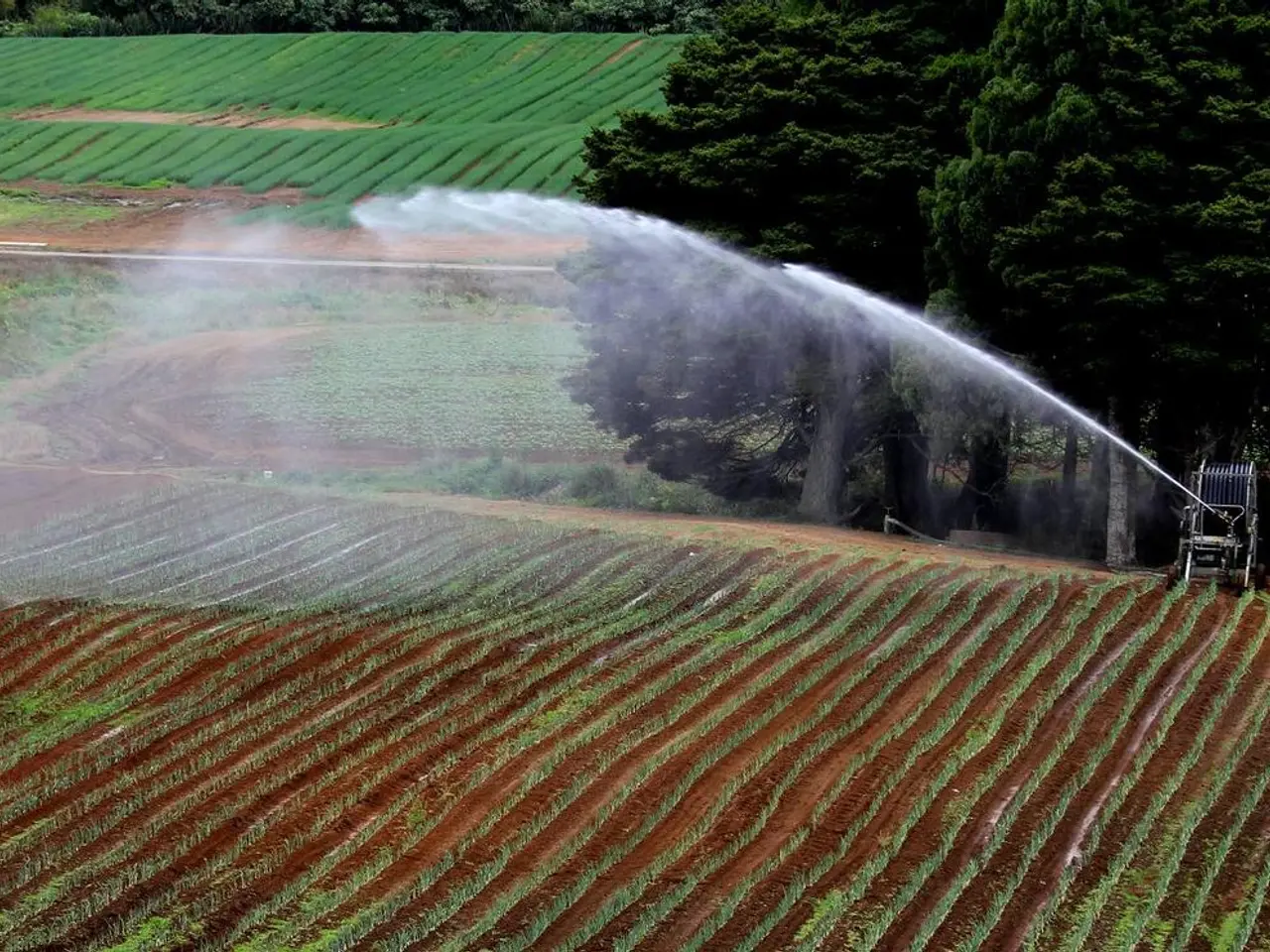Enhancing Nutrition in Successful Elevated Plant Beds
In the world of raised bed gardening, maintaining the right balance of nutrients is key to a bountiful harvest. Here's a simplified guide to help you manage nutrients effectively during different growth cycles.
Start by conducting annual soil testing before planting, focusing on pH and nutrient levels. This will give you a clear understanding of what your soil needs. A well-balanced organic soil mix, composed of about 40% topsoil, 30-40% high-quality compost, and 20-30% aeration materials like coconut coir or peat moss, can ensure good drainage and nutrient availability[1].
Based on the test results, amend your soil with organic fertilizers tailored to your soil's needs. For instance, compost or blood meal can provide nitrogen, bone meal or rock phosphate can offer phosphorus, and kelp meal or wood ash can supply potassium[3].
Regular application of compost is essential. It not only offers slow-release nutrients but also improves soil structure. Add it to your initial soil mix and top dress or side dress during the growing season[1][2]. Timing is crucial. Provide a nutrient-rich boost at planting and during early growth phases to promote root and leaf development. Then, side dress with additional organic fertilizer or compost during flowering and fruiting stages to support yield[1].
Avoid synthetic fertilizers when possible, favouring organic amendments to maintain soil health[1].
Keep a close eye on your plants for signs of nutrient deficiencies. Common indicators include yellowing leaves (nitrogen), purple discoloration or stunting (phosphorus), and leaf edge browning or curling (potassium)[1]. Promptly adjust nutrient inputs if deficiencies appear.
Practice crop rotation by changing plant families in each raised bed annually. This helps reduce pest buildup and nutrient depletion. Follow heavy feeders like tomatoes and corn with legumes to replenish nitrogen naturally. Use cover crops and green manures in off-seasons to rebuild soil organic matter and fix nitrogen[1].
In summary, an effective strategy includes annual soil testing, using a balanced organic soil mix, applying organic fertilizers (especially compost) timed to growth stages, monitoring plants for nutrient deficiency signs, and rotating crops to maintain long-term soil fertility in raised beds.
This synthesis draws primarily on recent expert gardening advice updated in July 2025[1][2][3]. Key nutrients for plant growth include Nitrogen, Phosphorus, and Potassium.
- To maintain a healthy vegetable garden in raised beds, it is essential to test the soil annually for pH and nutrient levels, ensuring a clear understanding of the soil's needs.
- A well-balanced organic soil mix, containing about 40% topsoil, 30-40% high-quality compost, and 20-30% aeration materials, can promote good drainage and nutrient availability for healthy growth.
- Based on the test results, organic fertilizers should be used to amend the soil, such as compost for nitrogen, bone meal or rock phosphate for phosphorus, and kelp meal or wood ash for potassium, to cater to the soil's unique requirements.
- Practicing good nutrition management involves regular application of compost, offering slow-release nutrients and improving the soil structure, as well as timed application of organic fertilizers during various growth phases to promote plant development and yield.
- To ensure long-term soil fertility, implement sustainable gardening practices like crop rotation, reducing pest buildup and nutrient depletion, and utilizing cover crops and green manures in off-seasons to rebuild soil organic matter and replenish nutrients.




